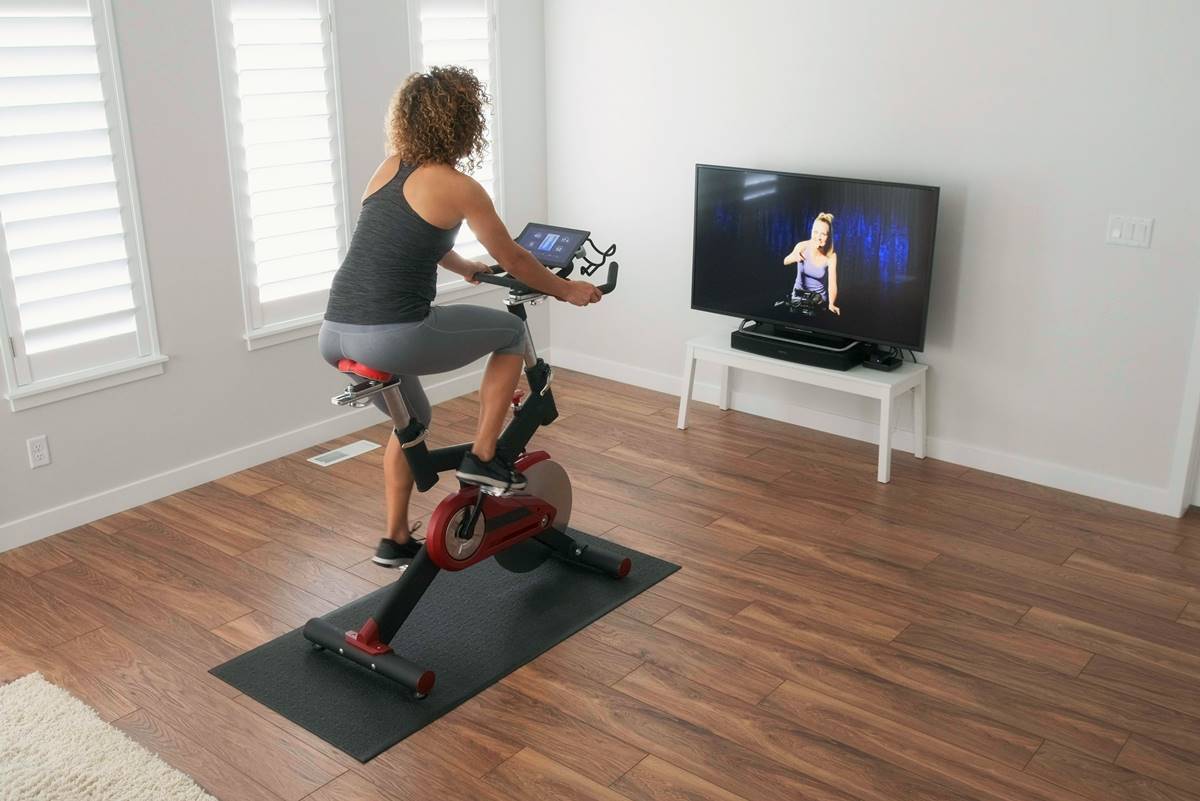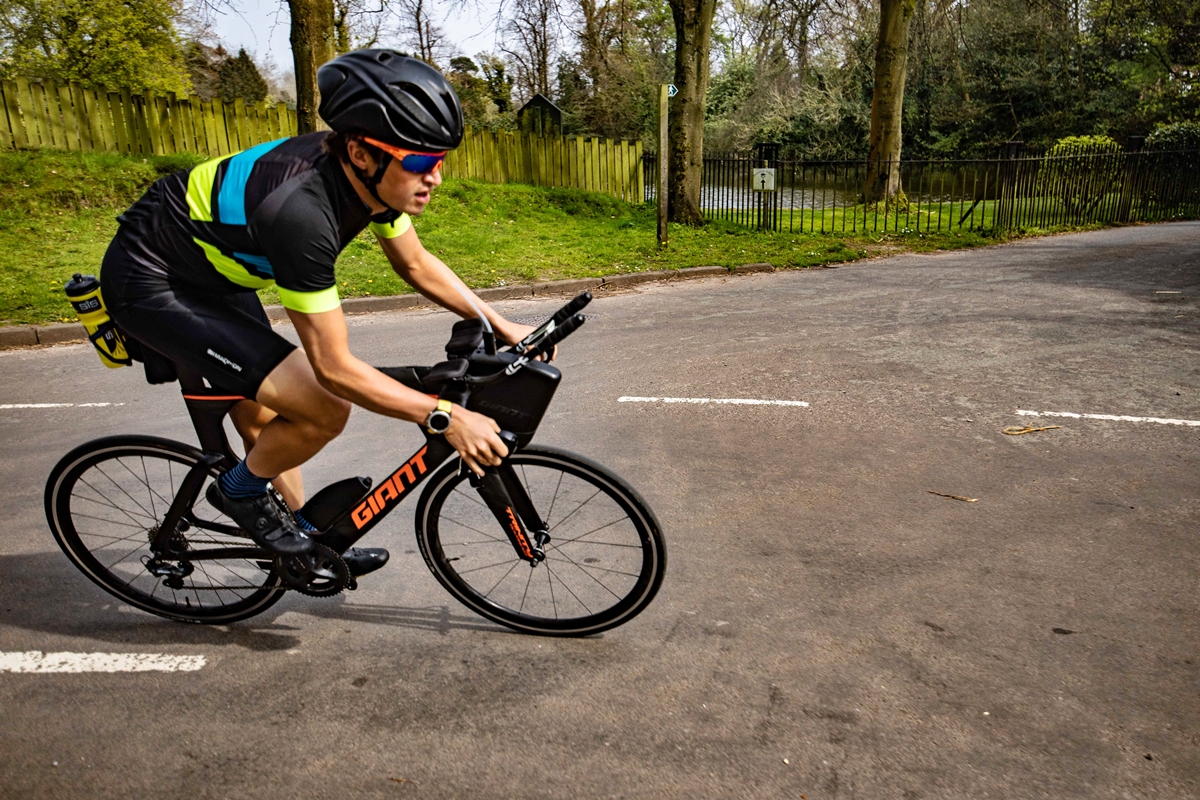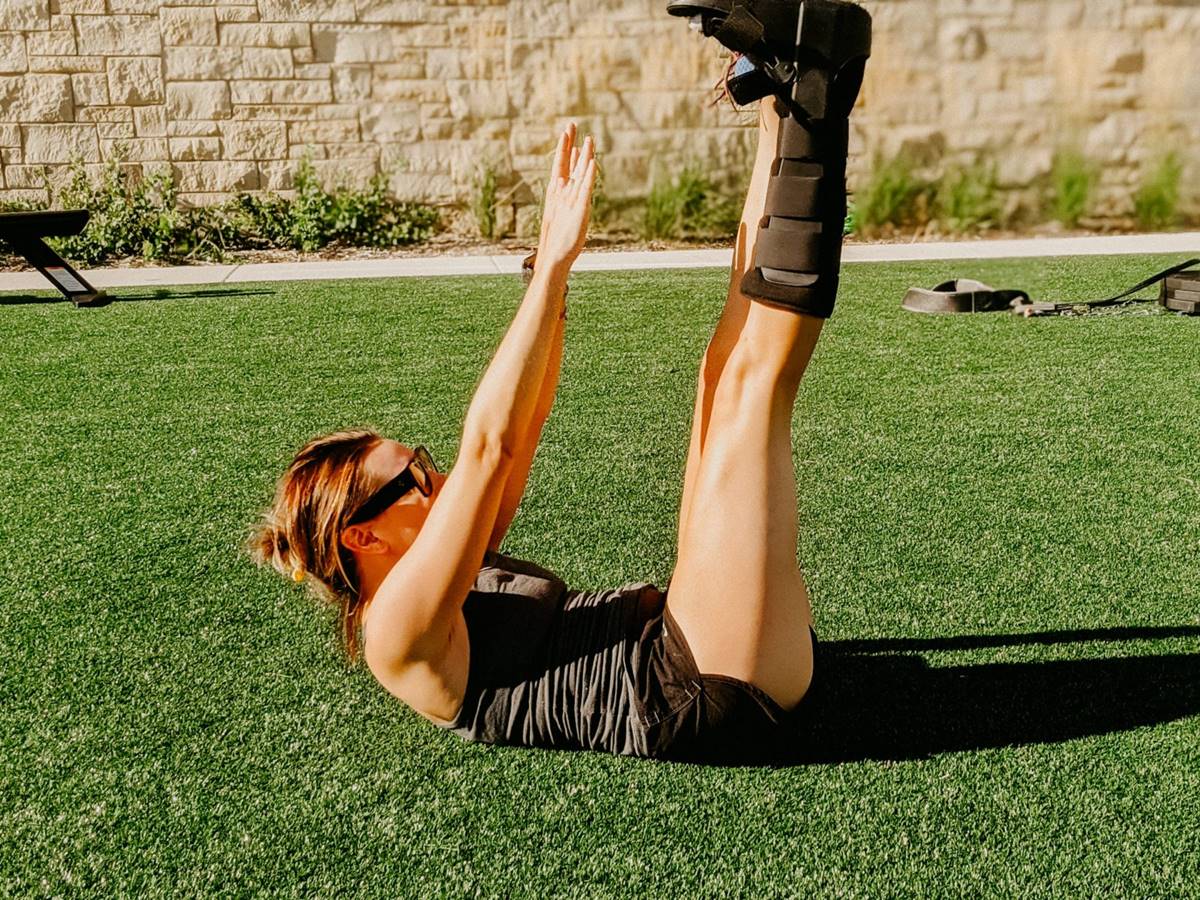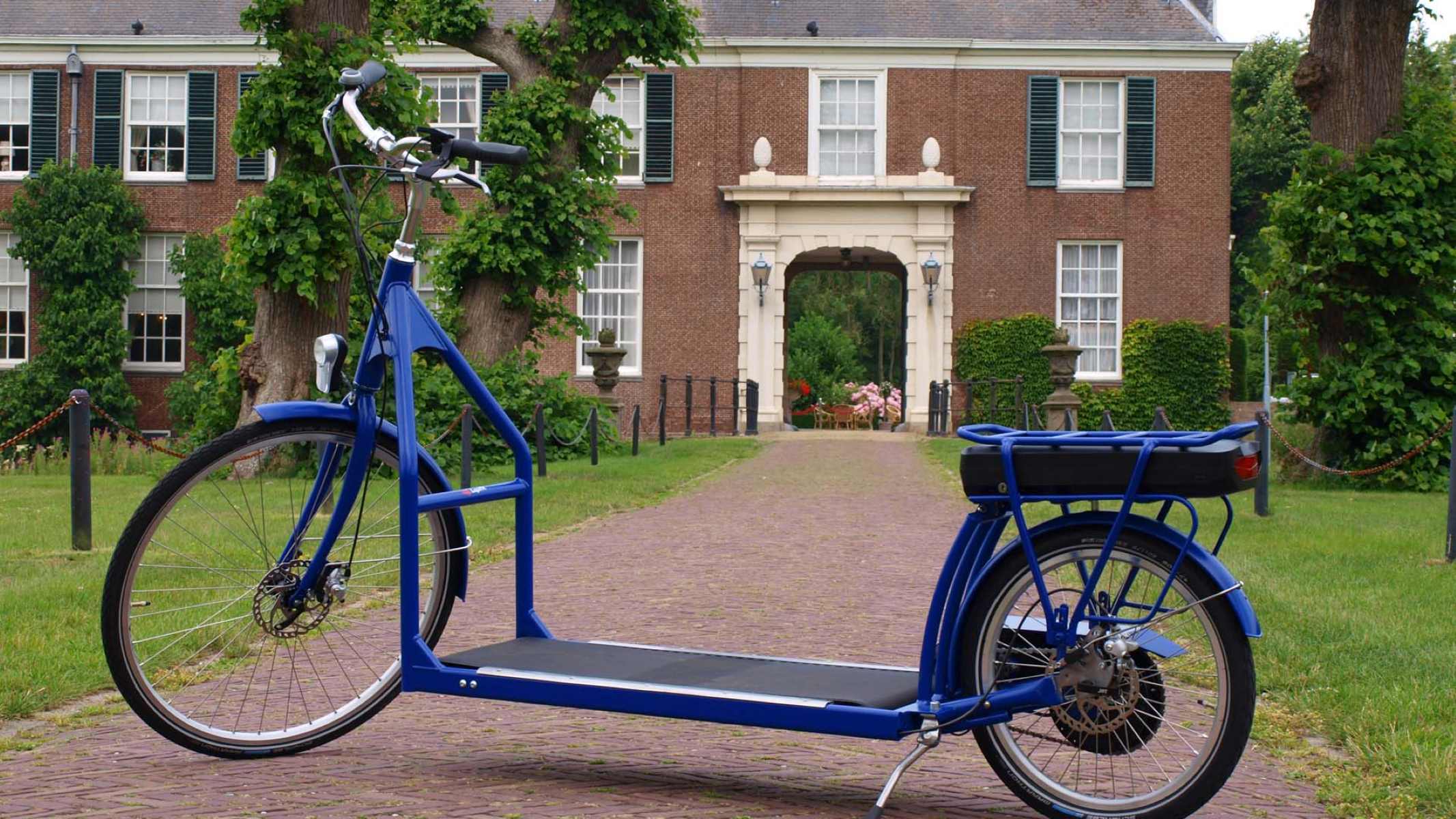Home>Misc>Product Reviews>How Much Is An Exercise Bike


Product Reviews
How Much Is An Exercise Bike
Modified: January 2, 2024
Looking for product reviews on exercise bikes? Find out how much an exercise bike costs and make an informed decision with our comprehensive reviews and recommendations.
Introduction
When it comes to maintaining a healthy and active lifestyle, having the right exercise equipment at home can make a world of difference. One such piece of equipment that has gained immense popularity is the exercise bike. But how much does an exercise bike cost?
Exercise bikes, also known as stationary bikes or indoor cycling bikes, are a convenient and effective way to get your heart rate up and burn calories without leaving the comfort of your home. They offer a low-impact cardio workout that targets the muscles in your lower body, helping to improve cardiovascular endurance and strengthen your legs.
While the benefits of owning an exercise bike are well-known, it’s important to consider various factors before making a purchase. Cost is one of the primary considerations, as exercise bikes come in a wide range of prices to suit different budgets and preferences.
In this article, we will explore the factors to consider when buying an exercise bike, the different types available, the features you should look for, the benefits of owning one, and the maintenance required to keep your exercise bike in optimal condition.
Whether you’re a fitness enthusiast looking for a high-end model or someone on a tight budget seeking a basic option, understanding the price range of exercise bikes and what you’re getting for your money can help you make an informed decision.
So, let’s dive in and uncover the world of exercise bikes, their costs, and what you need to know before investing in one.
Factors to Consider when Buying an Exercise Bike
Before purchasing an exercise bike, it’s essential to consider several factors to make sure you find the right one for your needs. Here are the key factors to keep in mind:
- Price: Determining your budget is crucial when shopping for an exercise bike. Prices can vary significantly, from budget-friendly options under $200 to high-end models exceeding $2,000. Consider your budget and find a bike that offers the best value for your money.
- Space: Evaluate the available space in your home where you plan to keep the exercise bike. Measure the dimensions to ensure it fits comfortably. Some bikes are compact and foldable, making them ideal for small spaces.
- Resistance Mechanism: The resistance mechanism determines the level of difficulty and intensity of your workouts. Exercise bikes typically offer either magnetic, friction, or air resistance. Magnetic resistance is often preferred for its smooth and quiet operation.
- Adjustability: Look for an exercise bike with adjustable features such as seat height, handlebar height, and pedal straps. This allows you to customize the bike to your body proportions for a comfortable and ergonomically correct workout.
- Weight Capacity: Ensure that the exercise bike can support your weight. Most bikes have a weight capacity ranging from 250 to 400 pounds. Select a bike that can handle your weight without compromising stability and safety.
- Display Console: Consider the display console features included with the bike. Look for options that provide essential workout data like time, distance, speed, and calories burned. Some advanced models even offer heart rate monitoring and pre-programmed workout programs.
- Comfort: An important factor to consider is the comfort level of the bike. Look for features like a padded seat, adjustable handlebars, and a smooth pedaling motion. A comfortable bike will encourage longer and more enjoyable workout sessions.
- Warranty: Check the warranty offered by the manufacturer. A longer warranty period indicates the manufacturer’s confidence in their product’s quality. Look for warranties that cover both the frame and parts to ensure you’re protected against any defects or malfunctions.
By considering these factors, you can narrow down your choices and find the exercise bike that best fits your budget and requirements. Keep in mind that what may be suitable for one person may not be the best choice for another. Take your time, do your research, and select a bike that aligns with your fitness goals and preferences.
Price Range of Exercise Bikes
The cost of exercise bikes can vary depending on factors such as brand, features, and build quality. Understanding the price range of exercise bikes can help you set a realistic budget and find the right bike within your price range. Here’s an overview of the different price categories:
- Entry-level Bikes: Entry-level exercise bikes are typically the most affordable options, ranging from $100 to $300. These bikes are a good choice for beginners or those on a tight budget. While they may lack advanced features, they still offer a decent cardio workout and basic functionality.
- Mid-range Bikes: Mid-range exercise bikes fall into the $300 to $800 price range. In this range, you’ll find a wider variety of bikes with better build quality, more features, and enhanced durability. These bikes often offer more resistance levels, advanced console features, and a smoother ride experience.
- High-end Bikes: High-end exercise bikes can range from $800 to $2000 or more. These bikes are built with premium materials, offer advanced features, and provide a superior riding experience. High-end bikes often feature interactive touchscreen displays, virtual training programs, and integration with fitness apps.
When considering the price range, it’s important to remember that higher-priced exercise bikes often come with additional features and more robust construction, providing a better overall workout experience. However, this doesn’t mean you have to break the bank to get a quality exercise bike. Many mid-range options offer excellent value for the price and can meet the needs of most fitness enthusiasts.
It’s worth noting that during sales events or when purchasing online, you may find discounted prices for exercise bikes. It’s always a good idea to compare prices from different retailers and look out for special promotions that can help you get a better deal on your purchase.
Remember, while price is a consideration, it’s important to focus on finding an exercise bike that suits your fitness goals, fits your body comfortably, and provides the features and functionality you desire. Research different models, read customer reviews, and consider your budget to make an informed decision when investing in an exercise bike.
Different Types of Exercise Bikes
Exercise bikes come in various types, each offering unique features and benefits. Understanding the different types of exercise bikes can help you determine which one is the best fit for your fitness goals and preferences. Here are the main types of exercise bikes:
- Upright Bikes: Upright bikes are designed to mimic the feel of traditional outdoor bicycles. They feature a compact and vertical design, with a smaller seat and handlebars positioned higher than the seat. Upright bikes provide a great cardiovascular workout, engage the core muscles, and are suitable for users of all fitness levels.
- Recumbent Bikes: Recumbent bikes are designed with a reclined seating position, with the pedals positioned in front of the user rather than below them. These bikes offer a more relaxed and comfortable workout experience, making them a popular choice for those with back or joint problems. Recumbent bikes provide excellent lower back support and engage the lower body muscles, making them ideal for rehabilitation purposes.
- Spin Bikes: Spin bikes, also known as indoor cycling bikes, are designed to simulate the feel of outdoor cycling. They feature a heavy flywheel and a sturdy frame, allowing for intense and high-intensity workouts. Spin bikes offer a realistic riding experience, allowing users to adjust both resistance and intensity, making them popular in gym classes and for users who enjoy intense cardiovascular workouts.
- Air Bikes: Air bikes are unique in that they use air resistance generated by a large fan. The resistance increases as the user pedals harder, providing a dynamic and challenging workout. Air bikes engage both the upper and lower body muscles, making them an excellent choice for a full-body cardio workout.
- Desk Bikes: Desk bikes combine an exercise bike with a workstation, allowing users to cycle while working or performing other tasks. These bikes are ideal for individuals who have sedentary jobs or find it challenging to make time for exercise. Desk bikes can help improve productivity and promote an active lifestyle.
Each type of exercise bike has its own advantages and considerations. Consider factors such as your fitness goals, comfort level, and any specific requirements you may have when choosing the type of exercise bike that suits you best. It’s worth trying out different types of bikes to see which one feels the most comfortable and suits your workout preferences.
Remember, regardless of the type of exercise bike you choose, consistency is key. Regularly incorporating your exercise bike into your fitness routine will help you achieve your fitness goals and enjoy the benefits of a cardiovascular workout from the comfort of your own home.
Features to Look for in an Exercise Bike
When purchasing an exercise bike, it’s important to consider the features it offers to ensure it meets your specific needs and preferences. Here are some key features to look for when choosing an exercise bike:
- Resistance Levels: Look for an exercise bike that offers multiple resistance levels. This allows you to adjust the intensity of your workout and progress as your fitness improves. Some bikes offer manual resistance adjustments, while others have pre-set programs or automatic resistance adjustment based on your workout.
- Adjustability: An adjustable seat and handlebars are crucial for finding a comfortable position while exercising. Look for an exercise bike that allows you to adjust the seat height, handlebar height, and distance in order to achieve proper alignment and avoid discomfort or strain during your workouts.
- Console Display: The console display provides valuable workout information such as time, distance, speed, calories burned, and heart rate. Look for a bike with a clear, easy-to-read display that shows the metrics that are most important to you. Some advanced models may even offer built-in workout programs and the ability to connect to fitness apps.
- Heart Rate Monitoring: Many exercise bikes come with built-in heart rate sensors on the handlebars or are compatible with wireless chest strap monitors. Monitoring your heart rate during workouts can help you stay within your target heart rate zone for efficient and effective cardiovascular training.
- Built-in Programs: Some exercise bikes come with pre-set workout programs that automatically adjust resistance and guide you through various intensity levels. These programs can simulate different types of workouts, such as interval training or hill climbs, providing variety and helping you stay motivated.
- Entertainment Options: If you enjoy multimedia entertainment during your workouts, consider an exercise bike with built-in speakers, USB ports, or Bluetooth connectivity. This allows you to listen to music, watch videos, or connect to fitness apps for a more engaging workout experience.
- Stability and Durability: Look for an exercise bike with a solid and stable frame construction that can withstand your workout intensity. The bike should feel secure and not wobble during use, providing a safe and comfortable exercise experience.
- Transportation and Storage: If you have limited space or plan to move your exercise bike frequently, consider a bike that is compact and foldable for easy transportation and storage.
Remember, the features you prioritize will depend on your personal preferences and fitness goals. Consider what is most important for your needs and make sure the exercise bike you choose has the features that align with your requirements.
By carefully evaluating these features, you can select an exercise bike that offers the functionality, convenience, and enjoyment that will keep you motivated and engaged in your fitness journey.
Benefits of Owning an Exercise Bike
An exercise bike is a versatile and effective piece of fitness equipment that offers numerous benefits for both physical health and overall well-being. Here are some key advantages of owning an exercise bike:
- Cardiovascular Health: Regular aerobic exercise, such as cycling on an exercise bike, can improve cardiovascular health by increasing heart rate and lung capacity. It helps strengthen the heart muscles, improves blood circulation, and reduces the risk of heart diseases.
- Weight Loss and Management: Cycling on an exercise bike is a highly effective way to burn calories and contribute to weight loss or weight management goals. It engages large muscle groups, such as the legs and glutes, helping to boost metabolism and shed unwanted pounds.
- Lower Impact Workout: Compared to activities like running or jogging, cycling on an exercise bike provides a low-impact workout that puts less strain on the joints, making it ideal for individuals with joint issues or those recovering from injuries.
- Muscle Toning and Strength: Regular cycling helps tone and strengthen the muscles in your lower body, including the quadriceps, hamstrings, calves, and glutes. It can also engage your core muscles, helping to improve overall stability and balance.
- Convenience and Accessibility: Owning an exercise bike allows you to work out in the comfort of your own home, regardless of the weather or time constraints. It provides convenience and accessibility, making it easier to include regular exercise in your daily routine.
- Mental Well-being: Exercise releases endorphins, which are known as the “feel-good” hormones, leading to improved mood and reduced stress and anxiety. Cycling on an exercise bike can help boost your mental well-being, increase energy levels, and promote better sleep quality.
- Customizable Workouts: Most exercise bikes offer adjustable resistance levels, allowing you to tailor your workout intensity to your fitness level and goals. This versatility makes it suitable for people of all fitness levels, from beginners to advanced athletes.
- Multi-tasking Potential: An exercise bike allows you to multi-task during your workout. You can read a book, watch TV, listen to music, or catch up on emails while pedaling away, maximizing your time efficiency.
These benefits highlight the versatility and effectiveness of incorporating an exercise bike into your fitness routine. Whether you’re aiming to improve cardiovascular health, lose weight, tone muscles, or simply stay active, an exercise bike can be a valuable addition to your home gym or fitness space.
Remember to start slowly and gradually increase the duration and intensity of your workouts. Make it a habit to use the exercise bike consistently to reap the long-term benefits it offers. Pairing your cycling sessions with a balanced diet and other forms of exercise can further enhance your overall health and well-being.
Maintenance and Upkeep of Exercise Bikes
Maintaining and properly caring for your exercise bike is essential to ensure its longevity and optimal performance. Here are some key maintenance tasks and upkeep tips to keep your exercise bike in great shape:
- Cleaning: Regularly clean your exercise bike to remove any dust, sweat, or debris that may accumulate on the frame, seat, and handlebars. Use a soft cloth or a non-abrasive cleaning solution to wipe down the surfaces. Avoid spraying water directly onto the console or electronic components.
- Lubrication: Lubricate the moving parts of your exercise bike, such as the pedals and the resistance mechanism, to reduce friction and ensure smooth operation. Refer to the manufacturer’s guidelines for the appropriate type and frequency of lubrication.
- Adjustments: Periodically check and adjust the seat height, handlebar position, and pedal straps to ensure proper alignment and a comfortable workout experience. Loose screws or bolts should be tightened to maintain stability.
- Monitor Cables and Wires: Regularly inspect the cables and wires connecting the console to the bike to ensure they are not frayed or damaged. If you notice any issues, contact the manufacturer for repair or replacement.
- Monitor Tension Belts: If your exercise bike has a tension belt, check it regularly for signs of wear or stretching. Replace the belt if it becomes loose or damaged to maintain proper resistance during your workouts.
- Check Electronics: Ensure that the console and electronic components of your exercise bike are functioning properly. If you notice any issues, such as a dim display or malfunctioning buttons, consult the manufacturer’s instructions or contact customer support for assistance.
- Keep it Dry: Avoid exposing your exercise bike to excessive moisture or humidity, as it can damage the electronics and promote the growth of mold or mildew. If you sweat heavily during your workouts, wipe down the bike afterward to remove any moisture.
- Regular Servicing: Consider scheduling regular servicing or maintenance checks with a qualified technician to ensure that all components of your exercise bike are in proper working order. They can inspect and address any potential issues before they develop into more significant problems.
Following these maintenance tips will help prolong the lifespan of your exercise bike and ensure that you can enjoy safe and efficient workouts for years to come. Additionally, refer to the manual provided by the manufacturer for specific care and maintenance instructions tailored to your exercise bike model.
Remember, regular upkeep of your exercise bike not only extends its lifespan but also ensures a smoother and more enjoyable workout experience every time you step on the pedals.
Pros and Cons of Using an Exercise Bike
Using an exercise bike offers numerous benefits for your physical fitness and overall well-being. However, like any form of exercise equipment, there are both pros and cons to consider. Here are the advantages and disadvantages of using an exercise bike:
Pros:
- Low-Impact Exercise: Cycling on an exercise bike is a low-impact workout that is gentle on the joints, making it suitable for individuals with joint issues or injuries.
- Cardiovascular Fitness: Regular use of an exercise bike improves cardiovascular health, strengthens the heart muscles, and increases lung capacity.
- Weight Management: Cycling on an exercise bike helps burn calories, contributing to weight loss or weight management goals.
- Muscle Toning and Strength: Pedaling on the bike engages muscles in the legs, glutes, and core, leading to muscle toning and increased strength.
- Convenience and Accessibility: Owning an exercise bike allows you to work out at any time, in the comfort of your own home, regardless of weather conditions.
- Multi-tasking Capability: You can multitask while using an exercise bike, such as reading, watching TV, or catching up on work emails.
- Low Risk of Injury: Compared to outdoor cycling, exercise bikes offer a controlled environment with a reduced risk of accidents or collisions.
- Versatility: Exercise bikes often come with adjustable resistance settings, allowing users of various fitness levels to customize their workout intensity.
Cons:
- Less Variety: Compared to outdoor cycling or other types of cardio equipment, exercise bikes may offer less variety in terms of workout experience.
- Boredom: The repetitive motion of cycling on an exercise bike can become monotonous for some individuals.
- Limited Upper Body Engagement: While exercise bikes engage the lower body muscles, they offer limited involvement of the upper body muscles.
- Requires Self-Motivation: Consistency and self-motivation are necessary to maintain a regular exercise routine on an exercise bike.
- No Weight-Bearing Exercise: Exercise bikes provide a non-weight-bearing exercise, which lacks the impact required for building bone density.
- Space and Storage: Exercise bikes can take up space in your home, and some models may not be easily foldable for storage.
It’s important to consider these pros and cons when deciding if an exercise bike is the right choice for your fitness routine. While exercise bikes offer convenience and an effective cardiovascular workout, it’s essential to find the exercise equipment that aligns with your preferences and fitness goals.
Keep in mind that the cons of using an exercise bike can often be mitigated by combining it with other types of exercise, incorporating variety in your workouts, and addressing any boredom by listening to music, watching TV, or trying out virtual fitness classes.
Ultimately, the decision to use an exercise bike should be based on your individual needs, preferences, and overall fitness objectives. Choose a workout routine that you enjoy and that will keep you motivated and consistent in your fitness journey.
Conclusion
Choosing the right exercise bike is an important decision that can greatly impact your fitness journey. By considering factors such as price range, different types of exercise bikes, features, and maintenance, you can make an informed decision that suits your budget and fitness goals.
Exercise bikes offer numerous benefits, including cardiovascular health, weight management, muscle toning, and convenience. They provide a low-impact workout that is accessible and adaptable to various fitness levels. Whether you opt for an upright bike, a recumbent bike, a spin bike, or any other type, the key is consistent usage and incorporating it into your fitness routine.
While exercise bikes have their advantages, it’s important to recognize the potential drawbacks, such as limited upper body engagement or the need for self-motivation. However, these can often be addressed by incorporating other forms of exercise or finding ways to stay motivated during your workouts.
Remember to research different models, read customer reviews, and try out different types of exercise bikes if possible. This will help you find the one that meets your specific needs, preferences, and fitness goals. Regular maintenance and care are also crucial to prolong the lifespan and optimize the performance of your exercise bike.
Ultimately, the benefits of owning an exercise bike can make a positive impact on your overall well-being and fitness. So, go ahead and invest in an exercise bike that fits your requirements, and start enjoying the convenience and effectiveness of working out from the comfort of your home.









